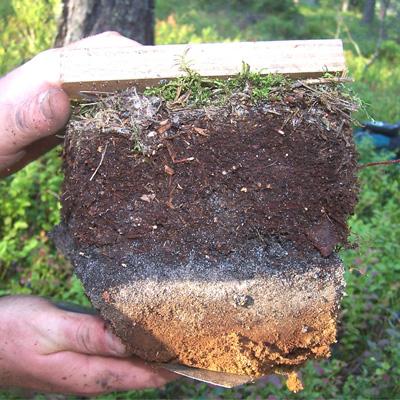Determining Calcium, Lead and Organic Matter Changes in Forest Floors across the Northern Forest

Atmospheric deposition of major elements and trace metals to the Northern Forest has varied greatly during the last hundred years. Lead deposition decreased by 1-2 orders of magnitude between 1960 and 1980, but the forest floor retains lead for 50 years or more. NSRC researchers made use of three existing long-term (since 1980) databases of forest floor chemistry to resample and quantify changes in lead and organic matter content of the forest floor.
At high elevation (>800 meters) sites in Vermont, lead amounts in the forest floor collected in this study ranged from 1.1 to 2.9 grams per square meter, while samples collected from identical locations in 1980 ranged from 1.3 to 2.5 grams of lead per square meter, showing no change in more than two decades. However, at many lower elevation forest sites, with mixed vegetation, significant decreases in lead amount were observed during the study period. In general, lead amounts in lower elevation sites ranged from 1.0 to 2.0 grams per square meter in 1980 and approximately 0 to 1.0 gram per square meter more than 20 years later.
Data from lower elevation forests suggest that the release of lead from the forest floor is controlled by latitude, elevation, and vegetation type. Inorganic phases of lead play an important role in determining lead mobility and bioavailability, even in forest floor horizons that are dominated by organic matter. For the foreseeable future, the forest floor is going to be the major source of lead in the Northern Forest.
